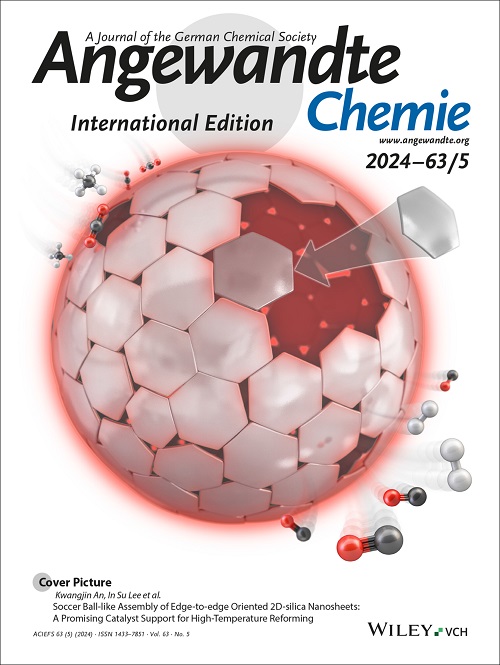Precision Screening and Surgical Resection of Pan-Cancer Using a Tandem-Locked NIR-II Fluorescent Probe with Optimized Activation Efficiency.
IF 16.9
1区 化学
Q1 CHEMISTRY, MULTIDISCIPLINARY
引用次数: 0
Abstract
The development of fluorescent probes for cancer detection and imaging that balance high sensitivity, precision, and broad applicability remains a significant challenge. Although "dual-locked" probes have been devised to enhance diagnostic accuracy via two biomarkers, most fall short in sensitivity, response-time and generalizability for pan-cancer use. We address these gaps with ACy-H-NTR, a cascaded-activation, doubly-quenched NIR-II probe. Engineered to respond to hypoxia and acidity-universal tumor hallmarks-it offers fast-response, high sensitivity and specificity for pan-cancer screening and imaging. In contrast to existing probes, its tandem-locked design ensures robust activation exclusively within pan-tumor microenvironments, effectively reducing false positives and delineating precise diagnostic boundaries. Its NIR-II emission and "activation-retention" mechanism enhances tumor imaging efficacy, and effectively tackles issues of rapid clearance and background noise, achieving 4.9-fold higher tumor-to-normal (T/N) ratio than ICG and retaining tumor specificity for over 2 days. In pan-cancer models, it enables high-contrast imaging (T/N ~7.8) and precise resection with sub-2 mm margins. Crucially, it differentiates human carcinoma from adjacent tissues with sharp boundaries, confirming clinical potential. By integrating a tandem-locked and doubly-quenched design that simultaneously optimizes activation efficiency, NIR-II imaging capabilities, and activation-retention mechanisms, this probe overcomes current limitations to enable precise pan-cancer identification and surgical navigation.优化激活效率的串联锁定NIR-II荧光探针精确筛选和手术切除泛癌。
开发用于癌症检测和成像的荧光探针,以平衡高灵敏度、高精度和广泛的适用性仍然是一个重大挑战。尽管“双锁定”探针已被设计用于通过两种生物标志物来提高诊断准确性,但大多数探针在灵敏度、反应时间和泛化癌症应用方面都存在不足。我们用ACy-H-NTR(一种级联活化、双淬火的NIR-II探针)解决了这些空白。设计用于应对缺氧和酸性-普遍的肿瘤标志-它提供快速反应,高灵敏度和特异性泛癌症筛查和成像。与现有探针相比,其串联锁定设计确保了泛肿瘤微环境下的强大激活,有效减少假阳性并描绘精确的诊断边界。其NIR-II发射和“激活-保留”机制提高了肿瘤成像效能,有效解决了快速清除和背景噪声问题,肿瘤与正常(T/N)比ICG高4.9倍,肿瘤特异性保持时间超过2天。在泛癌模型中,它可以实现高对比度成像(T/N ~7.8)和亚2mm边缘的精确切除。至关重要的是,它能将人类癌与边界清晰的邻近组织区分开来,从而证实了临床潜力。通过集成串联锁定和双猝灭设计,同时优化了激活效率、NIR-II成像能力和激活-保留机制,该探针克服了目前的限制,实现了精确的泛癌症识别和手术导航。
本文章由计算机程序翻译,如有差异,请以英文原文为准。
求助全文
约1分钟内获得全文
求助全文
来源期刊
CiteScore
26.60
自引率
6.60%
发文量
3549
审稿时长
1.5 months
期刊介绍:
Angewandte Chemie, a journal of the German Chemical Society (GDCh), maintains a leading position among scholarly journals in general chemistry with an impressive Impact Factor of 16.6 (2022 Journal Citation Reports, Clarivate, 2023). Published weekly in a reader-friendly format, it features new articles almost every day. Established in 1887, Angewandte Chemie is a prominent chemistry journal, offering a dynamic blend of Review-type articles, Highlights, Communications, and Research Articles on a weekly basis, making it unique in the field.

 求助内容:
求助内容: 应助结果提醒方式:
应助结果提醒方式:


